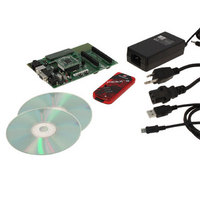DV164136 Microchip Technology, DV164136 Datasheet - Page 286

DV164136
Manufacturer Part Number
DV164136
Description
DEVELOPMENT KIT FOR PIC18
Manufacturer
Microchip Technology
Series
PIC®r
Type
MCUr
Datasheets
1.DM183032.pdf
(38 pages)
2.DV164136.pdf
(448 pages)
3.DV164136.pdf
(6 pages)
4.DV164136.pdf
(446 pages)
5.DV164136.pdf
(4 pages)
6.DV164136.pdf
(18 pages)
Specifications of DV164136
Contents
Board, Cables, CDs, PICkit™ 3 Programmer, Power Supply
Processor To Be Evaluated
PIC18F8722, PIC18F87J11
Interface Type
RS-232, USB
Operating Supply Voltage
3.3 V, 5 V
Silicon Manufacturer
Microchip
Core Architecture
PIC
Core Sub-architecture
PIC18
Silicon Core Number
PIC18F
Silicon Family Name
PIC18F8xxx
Kit Contents
PIC18 Exp Brd PICkit 3 Cable CD PSU
Lead Free Status / RoHS Status
Lead free / RoHS Compliant
For Use With/related Products
PIC18F8722, PIC18F87J11
Lead Free Status / Rohs Status
Lead free / RoHS Compliant
Available stocks
Company
Part Number
Manufacturer
Quantity
Price
Company:
Part Number:
DV164136
Manufacturer:
MICROCHIP
Quantity:
12 000
- DM183032 PDF datasheet
- DV164136 PDF datasheet #2
- DV164136 PDF datasheet #3
- DV164136 PDF datasheet #4
- DV164136 PDF datasheet #5
- DV164136 PDF datasheet #6
- Current page: 286 of 448
- Download datasheet (8Mb)
PIC18F87J11 FAMILY
20.2.5
The EUSART module has the capability of sending the
special Break character sequences that are required by
the LIN bus standard. The Break character transmit
consists of a Start bit, followed by twelve ‘0’ bits and a
Stop bit. The Frame Break character is sent whenever
the SENDB and TXEN bits (TXSTAx<3> and
TXSTAx<5>) are set while the Transmit Shift Register
is loaded with data. Note that the value of data written
to TXREGx will be ignored and all ‘0’s will be
transmitted.
The SENDB bit is automatically reset by hardware after
the corresponding Stop bit is sent. This allows the user
to preload the transmit FIFO with the next transmit byte
following the Break character (typically, the Sync
character in the LIN specification).
Note that the data value written to the TXREGx for the
Break character is ignored. The write simply serves the
purpose of initiating the proper sequence.
The TRMT bit indicates when the transmit operation is
active or Idle, just as it does during normal transmis-
sion. See Figure 20-10 for the timing of the Break
character sequence.
20.2.5.1
The following sequence will send a message frame
header made up of a Break, followed by an Auto-Baud
Sync byte. This sequence is typical of a LIN bus
master.
FIGURE 20-10:
DS39778D-page 286
Reg. Empty Flag)
Reg. Empty Flag)
Reg. Empty Flag)
Write to TXREGx
(Transmit Buffer
(Transmit Shift
(Transmit Shift
BRG Output
(Shift Clock)
SENDB bit
TRMT bit
TXx (pin)
TXxIF bit
BREAK CHARACTER SEQUENCE
Break and Sync Transmit Sequence
SEND BREAK CHARACTER SEQUENCE
Dummy Write
SENDB sampled here
Start Bit
Bit 0
Bit 1
Break
1.
2.
3.
4.
5.
When the TXREGx becomes empty, as indicated by
the TXxIF, the next data byte can be written to
TXREGx.
20.2.6
The Enhanced USART module can receive a Break
character in two ways.
The first method forces configuration of the baud rate
at a frequency of 9/13 the typical speed. This allows for
the Stop bit transition to be at the correct sampling
location (13 bits for Break versus Start bit and 8 data
bits for typical data).
The second method uses the auto-wake-up feature
described in Section 20.2.4 “Auto-Wake-up on Sync
Break Character”. By enabling this feature, the
EUSART will sample the next two transitions on
RXx/DTx, cause an RCxIF interrupt and receive the
next data byte followed by another interrupt.
Note that following a Break character, the user will
typically want to enable the Auto-Baud Rate Detect
feature. For both methods, the user can set the ABDEN
bit once the TXxIF interrupt is observed.
Configure the EUSART for the desired mode.
Set the TXEN and SENDB bits to set up the
Break character.
Load the TXREGx with a dummy character to
initiate transmission (the value is ignored).
Write ‘55h’ to TXREGx to load the Sync
character into the transmit FIFO buffer.
After the Break has been sent, the SENDB bit is
reset by hardware. The Sync character now
transmits in the preconfigured mode.
RECEIVING A BREAK CHARACTER
Bit 11
Auto-Cleared
© 2009 Microchip Technology Inc.
Stop Bit
Related parts for DV164136
Image
Part Number
Description
Manufacturer
Datasheet
Request
R

Part Number:
Description:
Manufacturer:
Microchip Technology Inc.
Datasheet:

Part Number:
Description:
Manufacturer:
Microchip Technology Inc.
Datasheet:

Part Number:
Description:
Manufacturer:
Microchip Technology Inc.
Datasheet:

Part Number:
Description:
Manufacturer:
Microchip Technology Inc.
Datasheet:

Part Number:
Description:
Manufacturer:
Microchip Technology Inc.
Datasheet:

Part Number:
Description:
Manufacturer:
Microchip Technology Inc.
Datasheet:

Part Number:
Description:
Manufacturer:
Microchip Technology Inc.
Datasheet:

Part Number:
Description:
Manufacturer:
Microchip Technology Inc.
Datasheet:











